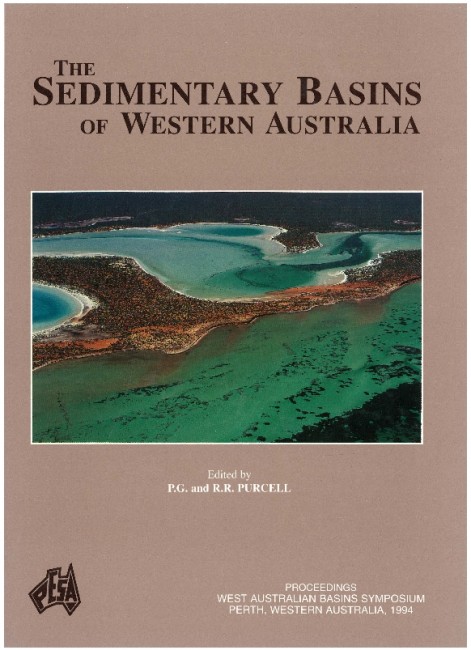Publication Name: The Sedimentary Basins of WA
Authors: Catherine I. Elliott
Publication Volume: 1
Date Published: July 1994
Number of Pages: 25
Reference Type: Book Section
Abstract:
The Australian continent is transected by a network of continental-scale lineaments that can be correlated with aligned local-scale geological, geophysical and geomorphological features. The G3 and GS gravity corridors in northwestern Australia are examples of ancient lineaments that have undergone a complex reactivation history from the earliest Proterozoic through to the Holocene. The structural and depositional history of the Bonaparte Basin can be related to the interactive influence of at least four continental-scale lineaments. The configuration and regional structuring of the basin can be attributed to the influence of the north-northwest G2, north-northeast GS, northwest G 11 and north-south G 12 lineaments. The GS coincides with the Proterozoic Halls Creek Mobile Zone and its lateral equivalent, the Fitzmaurice Mobile Zone, and predates the rifting of the Bonaparte basin.The GS corridor has behaved as an oscillatory, reidel shear couple, with sinistral movement in the early Late
Proterozoic through to the Devonian. The initiation and subsequent rifting of the Bonaparte Basin was controlled
and localized by the G2, Gil and G12 lineaments that formed as a result of sinistral shearing along the Halls Creek Mobile Zone during this period.
Major Australian mineral and hydrocarbon occurrences are preferentially located at the intersections of continental-scale lineaments. Lineaments reflect basement architecture and form fluid-flow pathways within the lithosphere. Lineament intersections are zones of enhanced favourability in terms of geological structuring and, under suitable geochemical conditions, focus the transport, precipitation and entrapment of hydrocarbons and mineralized fluids.


